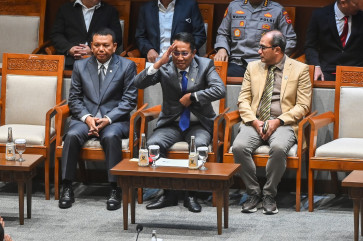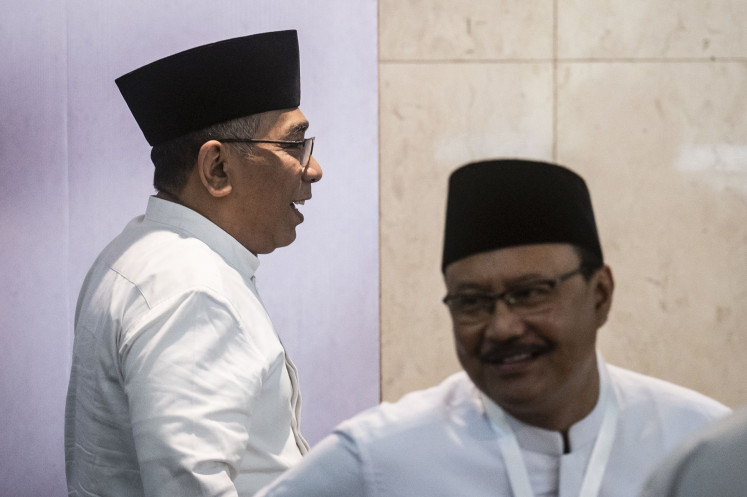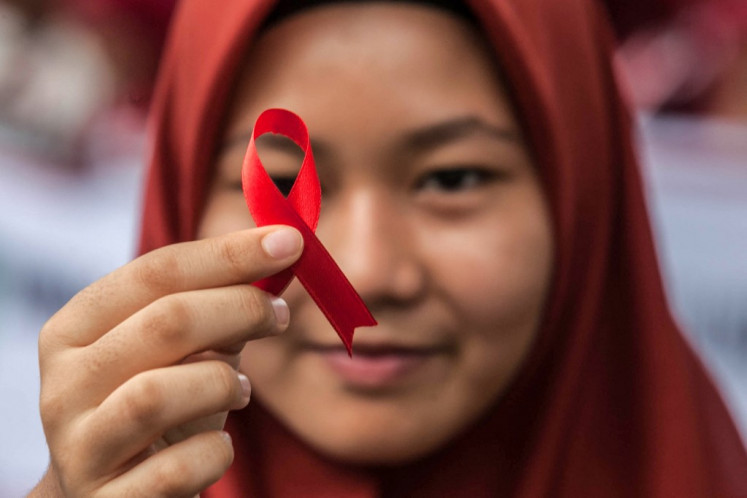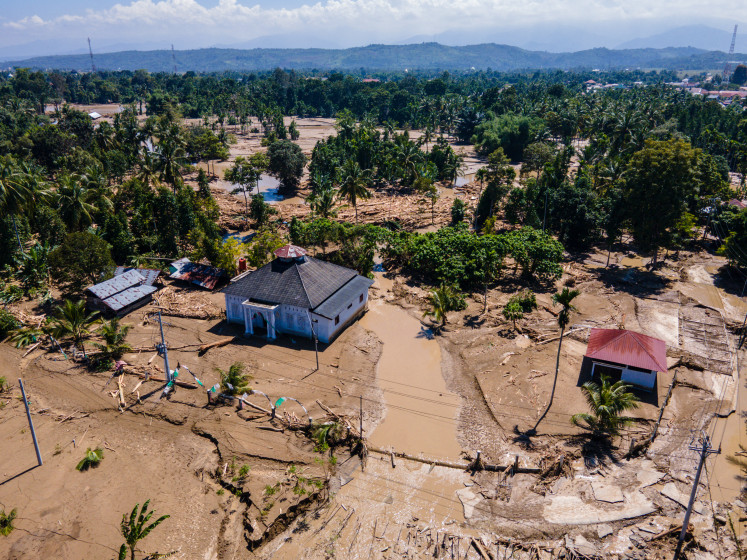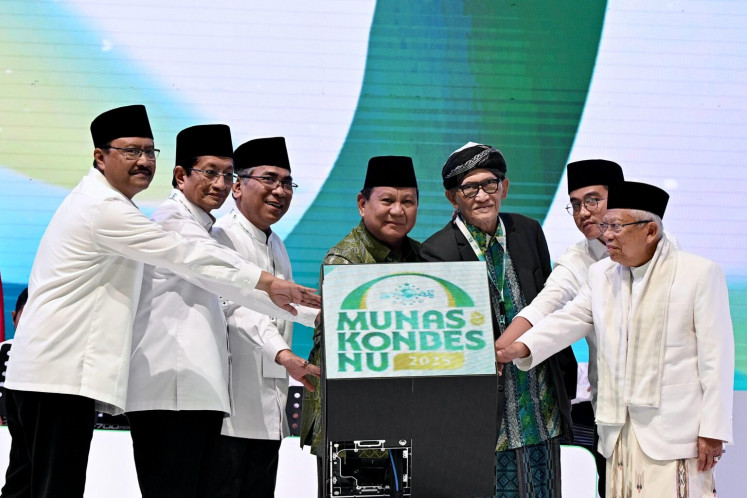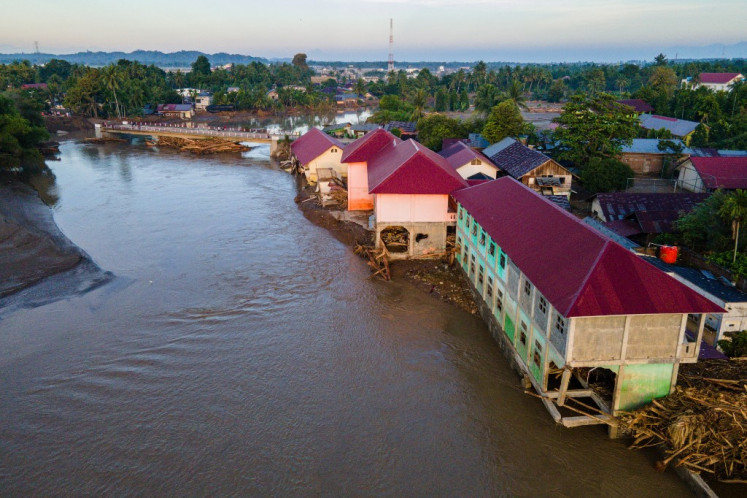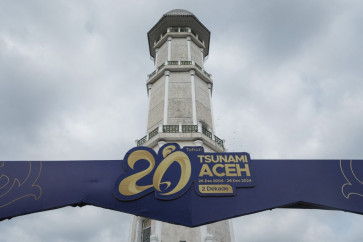Popular Reads
Top Results
Can't find what you're looking for?
View all search resultsPopular Reads
Top Results
Can't find what you're looking for?
View all search resultsDiscourse: Flexible, rapid decision-making at heart of 2004 tsunami response
Despite the heavy toll, the 2004 Indian Ocean earthquake and tsunami hitting Indonesia and dozens of other countries has become a wake-up call for nations to prepare for tsunamis as well as an example of how the world can work together to rebuild after disasters.
Change text size
Gift Premium Articles
to Anyone
 The decoration for the 20th anniversary of the 2004 Indian Ocean earthquake and tsunami stands in front of the main minaret of the Baiturrahman Mosque in Banda Aceh, Aceh on Dec. 25, 2024, the eve of the disaster's anniversary. On Dec. 26, 2004, a magnitude 9.1 earthquake struck the coast of Sumatra Island and triggered a huge tsunami across the Indian Ocean that killed more than 220,000 people in a dozen countries. (AFP/Yasuyoshi Chiba)
The decoration for the 20th anniversary of the 2004 Indian Ocean earthquake and tsunami stands in front of the main minaret of the Baiturrahman Mosque in Banda Aceh, Aceh on Dec. 25, 2024, the eve of the disaster's anniversary. On Dec. 26, 2004, a magnitude 9.1 earthquake struck the coast of Sumatra Island and triggered a huge tsunami across the Indian Ocean that killed more than 220,000 people in a dozen countries. (AFP/Yasuyoshi Chiba)
O
n the morning of Dec. 26, 2004, a 9.3-magnitude earthquake struck the bottom of Indian Ocean, triggering a tsunami that hit Aceh and other countries, killing more than 220,000 people worldwide. Despite the heavy toll, the disaster has become a wake-up call for nations to prepare for tsunamis as well as an example of how the world can work together to rebuild after disasters.
The Jakarta Post’s Kharishar Kahfi and Ina Parlina sat down with Jusuf Kalla on Dec. 10 in Jakarta to talk about how the first-term administration of president Susilo Bambang Yudhoyono, during which he served as vice president, responded to the 2004 Indian Ocean earthquake and tsunami that hit Aceh, as well how the international community helped Indonesia’s westernmost province recover from the disaster. The following are excerpts from the interview.
Question: How did you and the government first respond to the news about the tsunami? What was your and the government’s immediate response on receiving news about the tsunami?
Answer: I was at a gathering of Acehnese people in Jakarta when I first heard that something was happening in Aceh. But no one knew the details, because none of us could reach Aceh at the time. The first update we heard was that Lhokseumawe was among the hardest hit, with 10 people killed.
There were only eight ministers in Jakarta [at the time]. I rounded them up and I told them, “There was an earthquake, a big one.” I told them to prepare medicines and food to be transported to Aceh by air. I went to Banda Aceh on the morning of Dec. 27 with several ministers. We transited in Medan, where we bought all the bread and [instant] noodles we could find.
Read also: Death and rebirth: Aceh marches on, slowly, after 2004 tsunami
When I got to Banda Aceh, I broke down in tears on [seeing] dead bodies everywhere. No one had recovered them yet, because everyone was hit, so no one could [start search and rescue operations]. The first reports said the [toll] was 10,000, and then it rose to 20,000. Only later did we learn that the total figure was [in the] hundreds of thousands.



